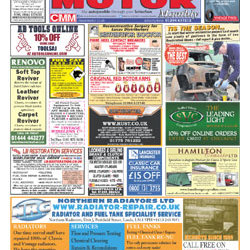Britain's best publication for enthusiast's events and small ads Click here to go to our website Facebook / Twitter FOR THE VERY LATEST EVENTS NEWS, CLICK HERE & MAKE SURE OF YOUR 2016 ALMANAC WITH A CMM SUB HERE
Don't wanna be here? Send us removal request.
Text
Got No Eyes!
OUR STORY THIS TIME IS about a casting rather than a lock, but we were versatile at Wilmot Breeden, back in the dying years of the British motor industry. As was Richard Terry the buyer at Reliant, who telephoned me one morning sounding more than usually desperate; “We’ve got no eyes!” he said. This did seem a bit peculiar. Had they all gone blind? Was there some sort of poison cloud over Tamworth? Reliant was always under-capitalised but they had some good ideas, like the ‘Fox’, a cheap utility vehicle for the West Indies, and in the UK they produced a lightweight runabout which might have had a great future if it hadn’t been painted pastel green and called the ‘Kitten’. And of course the award-winning Scimitar had been a terrific design. But this was the '80s and the Scimitar was old. Sales had dwindled to the point where Reliant had to ‘save up’ orders until they could afford to commission a batch of 100 cars. The buyer then had to source the necessary parts, even though many of the bits which had been readily available in 1967 were now semi-obsolete. We tried to help with various locks and handles but other suppliers would demand large minimum-batches or exorbitant piece-prices. Poor old Richard had an almost impossible job, and now he had no eyes, apparently! Well, that’s what it sounded like until he explained. Talk about blind panic! Many years earlier Reliant had made a die for the individual metal letters that fitted across the front of the Scimitar bonnet. This is pressure diecasting we’re talking about, and that type of workmanship is expensive so the toolmaker worked it out carefully and economically - “we need an S, C, I, M, an I - no, we have one of those - a T, A, and an R. Six letters, that’s right isn’t it?”
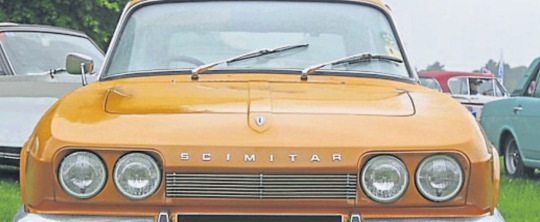
Well, no, and the result of this slight miscalculation was that they now had a huge stock of all the other letters but none of the letter ‘I’ and they needed a 100 for the current run of cars. Could I help? “Sorry, Richard, you’ll just have to order a fresh batch of castings,” I said. “All the other letters will have to be put back in the pot so it will be a bit expensive, but at least you’ll get the ones you need.” Ah. There was an embarrassed silence. Apparently it had been so long since Reliant last ordered any letter-sets that the foundry had closed-down and no-one knew what had happened to the tooling. It would cost £1000s to re-make and they didn’t have that sort of money. Oh dear, what to do? But with a little bit of ingenuity we saw a solution. We took one of our regularly-run small dies and carved a single impression of the letter ‘I’ into the overflow area, the cavity where excess metal normally forms a little puddle as the casting cools. That meant Reliant could in effect ‘ride-piggyback’ on something else, keeping costs to a minimum. We simply broke-off a couple of hundred letters from the sprue, cleaned-up the edges and sent them off for plating. Richard had his ‘I’s and could see his way forward to the next problem! __________ from p. 20 of issue September 2017 Subscribe now - www.classicmotor.co.uk
#classic#motor#monthly#cmm#autojumble#publication#french#wilmot#breeden#british#industry#car#vehicle#old#vintage#scimitar#bonnet#tamworth#1980#80s#80's
0 notes
Text
A Cutting Edge Museum
WHEN JOURNEYING UP THE M6 recently I took a diversion to Southport, to visit the British Lawnmower Museum. Most people to whom I mentioned it to had thought it was a joke. I can assure you it is not... The museum has been put together by Brian Radam (above) a former lawnmower racing champion. It is a vast collection of all sorts of makes and sizes of lawnmower. The lawnmower was invented in 1830 by Edward Budding of Gloucester who developed a cylinder cutting device to trim nap from cloth. In secret he developed this to be a grass cutting machine either powered by horse or by hand. The museum houses 100s of machines from hand powered ones to large engined motor examples, from horse drawn to sit on, petrol or mains or battery powered electric. They are all here with some surprises. All the makes you have ever heard of are represented and there are a number which have strong connections to the motor industries.
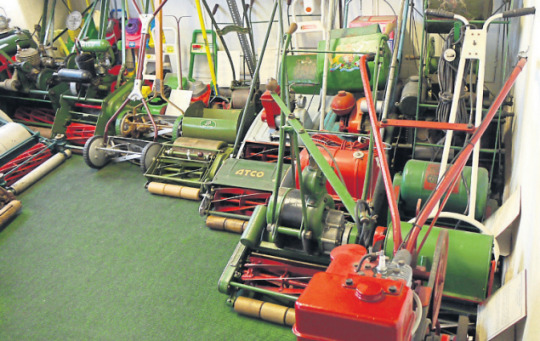
- At times the lawnmowers are closely packed! There is one car in the collection made by Atco who in 1939 announced the Atco Junior Safety-first Trainer which was launched with the idea of training young children in the art of car driving. Powered by a 98cc Atco Villiers engine they hoped to sell it in quantity to schools and local authorities, priced at £35 each. When war broke out some 200 had been sold; it did not appear after the war. The Museum has an excellent example. In presentation this is much more like a private collection that a museum. Though there are a lot of explanatory captions the machines are so closely packed in places you are not quite sure which one refers to which lawnmower. There are a lot of pictures and photographs as well as showcases of lawnmowermobilia. Not only are there a huge variety of makes represented, there are some from rich and celebrity owners as well. There is an extensive archive so if you want to date that old mower at the back of the garden shed this is the place to come.
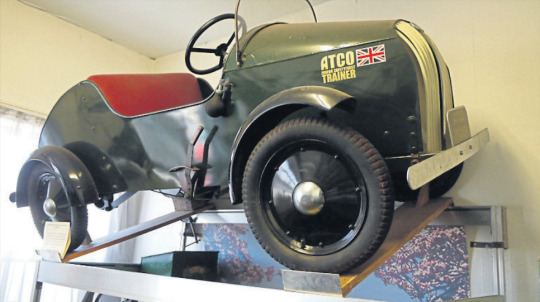
- The rare Atco trainer for children. This is a collection gone mad, but even so is most interesting. For more details: www.lawnmowerworld.com __________ from p. 11 of issue September 2017 Subscribe now - www.classicmotor.co.uk
#classic#motor#monthly#cmm#autojumbler#publication#atco#lawnmower#lawn#mower#world#collection#british#museum#england#uk#southport#brian#radam#michael#ware#michael ware#wareabouts
0 notes
Photo
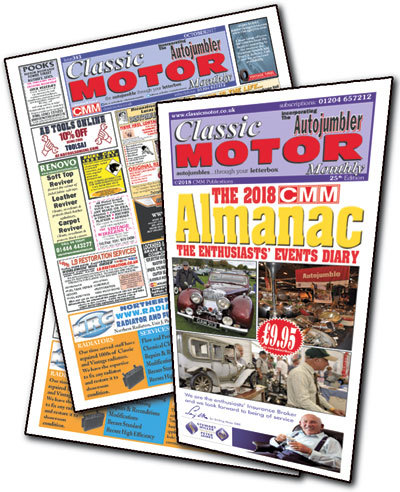
To purchase this year’s Almanac for yourself, click this link here
0 notes
Photo

You can now pay for your subscription through PayPal over at our website Classic Motor Monthly Direct card payments and cheques still valid
0 notes
Text
Ford Marks Centenary of Model TT Commercial
YOU’VE HEARD OF THE FORD MODEL T, but how about the Model TT which celebrates it's centenary this year? Though less well-known, it also had a big impact – as the forerunner to the modern day van and pickup, including today’s Transit. First launched in 1917, the Model TT was Ford’s first purposebuilt one-tonne van. Owners could customise the chassis with a cargo bed to transport everything from letters to fuel – just as they can today in the 2017 Ford Transit Custom. The Model TT was first launched in the U.S, and later built at Ford’s Trafford Park factory in Manchester. The Model TT van was longer and stronger than the Model T car, with a cab that could seat one driver and one passenger. The engine was started using a cranking handle on the front. For a smoother ride, customers could choose modern air-filled rear tyres instead of solid rubber. “It is amazing that while in some ways today’s vans are a million miles from the Model TT in how they have come on, they fundamentally do the same job as they were designed to do 100 years ago – providing a flexible means of keeping businesses on the move,” said Hans Schep, general manager, Commercial Vehicles, Ford of Europe.
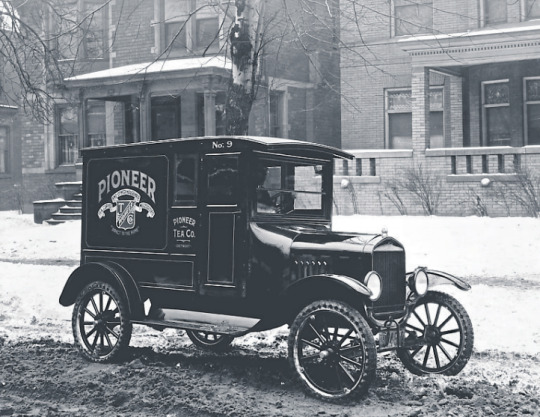
- Real workhorse - Ford Model TT Panel Delivery truck ploughing through the snow and slush. __________ from p. 4 of issue September 2017 Subscribe now - www.classicmotor.co.uk
#classic#motor#monthly#cmm#autojumbler#publication#ford#trafford#park#manchester#model#tt#delivery#truck#workhouse#commercial#centenary
0 notes
Text
What Is The Job Of An Editor?
I AM PRIVILEGED TO SEE WELL OVER 150 different motor club magazines. They vary from very simple news sheets (usually from a local club) to large magazines that would not look out of place on the shelves of W.H.Smith. From previous research I have found that the Club magazine usually accounts for some 60 – 75% of the club’s subscription. In the case of a nationally based club, such as a one make club it is often the only contact 75% or more of the members have with their club so the magazine is very important as is the job of the Editor. He is the communications officer and is possibly one of the most important people on the club committee. If he is not on the committee he/she ought to attend those meetings. For smaller clubs the Editor may have been press ganged into the post at an AGM. He/she is likely to have the necessary computer or publishing skills but what exactly does the job entail? These thoughts on Editors came about due to some impassioned editorials such as “I have had no written copy from members…if you don’t send me things I cannot produce a magazine”. Another Editor writes: “My job is to collate your contribution and polish them for publication, not to write the magazine”.

I have never edited a club magazine; well, that is not quite true. Back in the 1960’s I did compile a section newsletter for a one make club, however the old hand crank duplicator rendered my words almost illegible. I agree an Editor should not have to write the magazine, but it’s not enough to implore your readers to send in contributions. I believe the editor has to solicit the type of articles he/she wants to see in the magazine and this must be done by cajoling individual members to write, The editor not only has to arrange the coverage of the National Rally, he/she ought to be there looking out for interesting cars or recent restorations and asking the owners to write them up. Encourage members to send letters/emails. Write up committee meetings so improving public relations. Does the membership want to know what is going on in the wider world of the vintage or classic movement? I am delighted to see so many club magazines are taking large chunks of material put out by the Federation of British Historic Vehicle Clubs, this is the one way enthusiasts will hear about changes in legislation that might effect them. The bookstall magazines cannot cover these in detail. I am of the opinion that some club Editors exist in a vacuum. They are possibly only members of one or two clubs so do not see other club magazines. I do think that an annual meeting of motor club editors would be useful. I think such a get together with appropriate speakers could result in Editors gaining good ideas for content, on production and printing costs, other printers, cheaper paper, obtaining advertising and so on. Does your club have a club historian? Is it sufficient to say the club minutes will cover the historical record of the Club’s activities? (assuming they are all kept that is). Many clubs are celebrating big anniversaries at the moment. Have you a complete run of the club magazine? After all it’s the news piece of the Club – or ought to be... Yes, the Editor's job is to “collate contributions and polish them for publication” but in order to do this the Editor must have a plan for the content and he/ she has to arrange for others to write it. __________ from p. 11 of issue August 2017 Subscribe now - www.classicmotor.co.uk
#classic#motor#monthly#cmm#autojumbler#publication#paper#editor#editing#michael#ware#magazine#club#car#car club
0 notes








